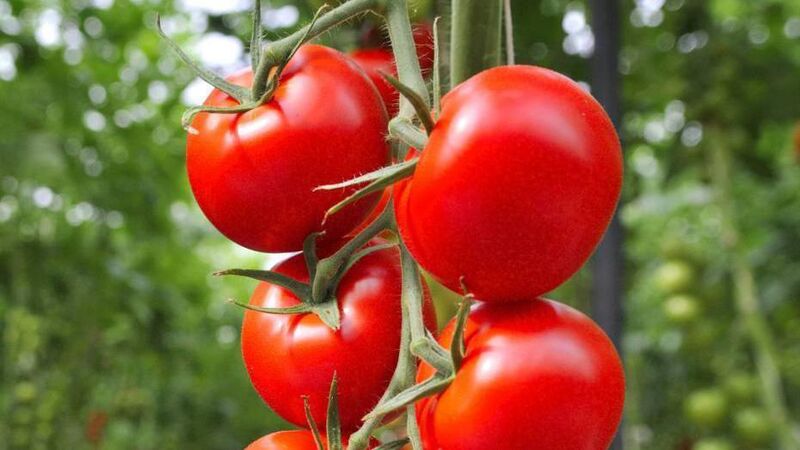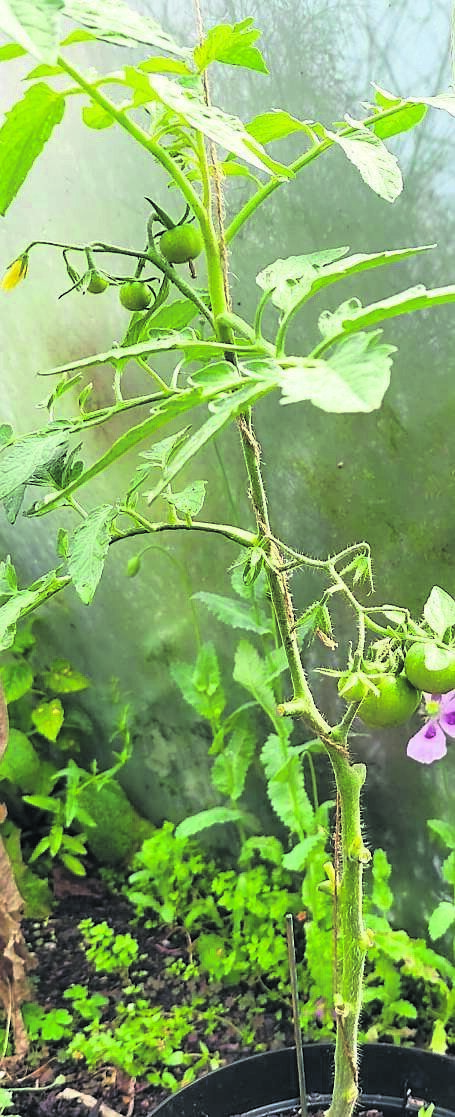A guide to growing the tastiest tomatoes

Ripe tomatoes in a greenhouse.
FINALLY, over the last week, some long- awaited rain to revive the garden and bring some welcome relief to thirsty plants.
Water collection tanks and butts have been replenished for now, and it is becoming clearer every year what a precious resource it is.
Plants were starting to suffer, even mature trees, which is quite worrying. Changing weather patterns are causing certain stresses for plants through lack of water, higher temperatures or extreme weather events.
The best thing that we can do as gardeners is to take good care of the soil so that the roots of plants are as well equipped as possible to cope with these different stresses.
We can also start planting plants and growing crops that can cope with extremes of temperature and that do not mind periods of drought.
Tomatoes are plants that have been basking in the glory to the sunshine over the last few weeks. This South American native needs higher temperatures to ripen and produce good quality fruit.
They can be determinate (bush varieties) or indeterminate (vine) in growing habit. Determinate require less pruning and are smaller in size, generally most of the crop ripens at the same time, within about two weeks.
‘Roma’ and ‘Tumbling Tom’ are two determinate varieties and these are the best tomatoes to grow if space is at a premium. They grow to a certain height and then stop, making them more suitable for growing in a pot.
Indeterminate are vine or cordon tomatoes and need regular attention to ensure a good crop. Some of the most reliable varieties are ‘Moneymaker’, ‘Gardeners Delight’, ‘Alicante’ and ‘Sungold’, and there are lots to choose from, ranging from cherry tomatoes to the larger beefsteak types.
It is best to remove side shoots and tie in new upward growth weekly, as well as feeding with a liquid seaweed tomato food. If side shoots are not removed, then a lot of valuable energy will go into leafy growth at the expense of flowers, and ultimately fruit.

Different supports can be used to provide stability for the plant, like bamboo canes and metal supports. Start training them using garden twine suspended from crop bars at the time of planting of the tomatoes in the polytunnel or glasshouse, so that the twine can be buried with the roots of the plant and the main stem can be trained up the twine each week as one of the most effective supports.
They require regular daily watering and it is good to provide the drink at the same time each day.
Obtaining a good crop of tomatoes requires regular maintenance in the form of pruning, training, feeding and watering.
Provided that all of this is done, some good sunshine and a good growing medium of slightly acid soil with plenty of organic matter, then a good crop should result at the end of the summer that can be used immediately in salads or preserved for use over the winter months.
Most transplants have been planted out of doors at this stage and direct sowing outdoors is possible now also.
It is important to continue to sow some lettuce, radish, spring onion, beetroot and other fast maturing salad crops every few weeks to ensure that a fresh supply of young plants is maturing.
Regular weeding of onions and earthing up of potatoes also needs to be attended to. The recently arrived rain will be welcome news for weed seedlings also, keeping us gardeners on our toes!
The Friends of Marymount are hosting some open gardens this June and July, with some great private gardens open to the public for the day. Check out Marymount.ie for more details.

Plant of the Week
This week, a rose has caught my eye. It is the climbing rose Rosa ‘Catherine Mermet’, pictured above, an old fashioned rose, originating in France, which produces a lovely delicate scent and pale pink double flowers on arching branches, which will wind their way through branches of trees and shrubs to make way to the light and produce a pink cloud of colour and scent early in the summer and continue producing intermittent displays throughout the summer months.
Seen here in the photo growing up through Daphne bholua, is the ‘Jacqueline Postill’ variety, which is such a stalwart during the depths of winter and even now has attractive glossy green foliage.
Growing the rose through the shrub gives added interest and colour during the summer months and the shrub is providing the support for the climbing rose to producing its arching branches.
It can take a few years to achieve the desired effect, and some strategic pruning to ensure that thorns are not leaping out of the shrub onto the path!
It is important to apply garden compost around the base of the daphne and the rose annually as the competition for nutrients and water is fierce.
Ensuring that both plants are well fed will result in healthier plants and a good display winter and summer.
You may also get some vegetables and other self-seeders emerging in the bed, as the fine head of cabbage on display at the base of the Daphne will attest to!
It is probably one of my most and least favourite things about homemade compost, the emerging seedlings - most of them are weeds but then a beautifully coloured foxglove or a head of cabbage will appear and it makes all of the weeding worth it!
Happy Summer Gardening and Planning!







 App?
App?


